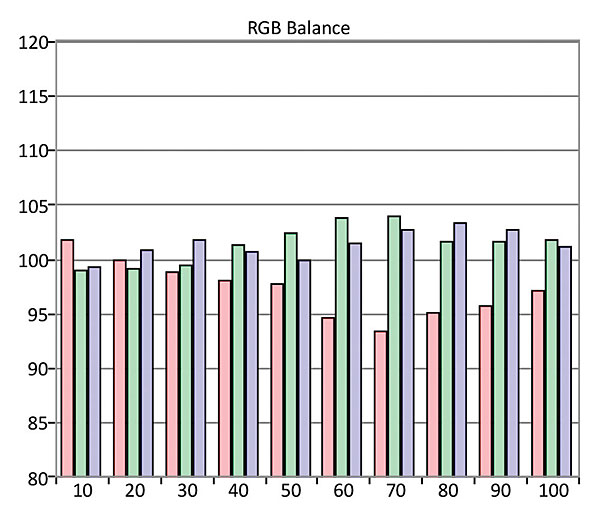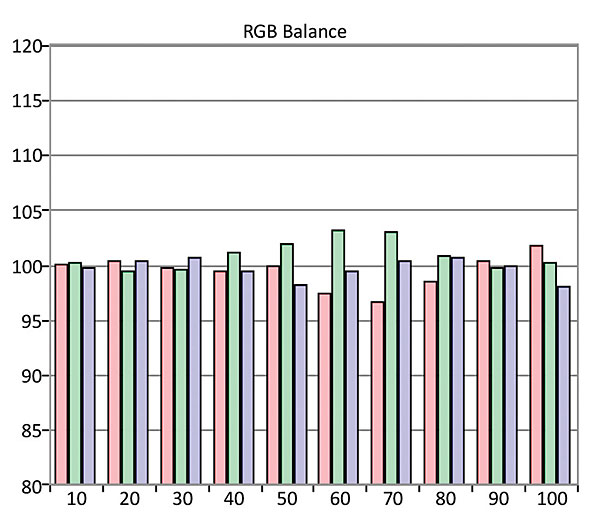Epson PowerLite Pro Cinema LS10500 LCD Projector Review Test Bench
Full-On/Full-Off Contrast Ratio: 24,950:1
Measurements were made with SpectraCal CalMAN measurement software, Photo Research PR-650 and Klein K-10A color meters, and an AVFoundry VideoForge pattern generator. All calibrations and measurements were made with a 1080p input signal in standard dynamic range.


In the calibrated Digital Cinema Color mode, with Brightness at 0, Contrast at –5, Power Consumption on High, and Gamma at –1, the measured peak white level was 24.95 ft-L and the black level 0.001 ft-L, resulting in the contrast ratio shown above. This measurement was made with the pause bug from an Oppo UDP-203 Ultra HD Blu-ray player displayed in the upper left-hand corner of the screen, which kept the lasers from shutting down completely as they do on a full black screen. With Gamma at –1, the measured gamma increased steadily from a minimum of 1.82 at 10% to 2.37 at 90%, for an average gamma of 2.16.
In these settings, the white balance Delta E values, both pre- and post- calibration, were uncharacteristically high for the white point goal of .313/.329—the x/y coordinates for D65 on the 2D CIE color gamut chart. Until this oddity is resolved, I’ll report here on the white point deviations from these x/y standards rather than using Delta E values. The Imaging Science Foundation’s recommendation for good adherence to these coordinates sets a worst case deviation of 0.004 each, for x and y. (The ISF is an independent organization that trains video calibrators.) Pre-calibration, the Epson deviated from 0.004 at seven points along the brightness range from 20% to 100%, with a maximum error of 0.008 at 70%. Post-calibration, the deviations dropped to 0.003, with a maximum of 0.006 at 50%. While our post-calibration chart shown here isn’t as pretty as the best we’ve measured, the subjective color was nevertheless hard to criticize.
The color Delta Es for the (BT.709) color points looked more reasonable. They showed a considerable improvement after I used the projector’s color management system (CMS). Before calibration, yellow, red, and green were highly oversaturated—with green deviating as far as I’ve ever seen from the Rec. 709 standard. The CMS controls lacked the range to completely correct all of the colors, but the post-calibration color Delta Es were all under 3.0, except for green, at 6.5. (Delta E indicates how close the color comes to the D65 HD. Values below 3—some experts allow for 4—are generally considered visually indistinguishable from ideal.)

The Epson passed all of our standard video tests without a hitch. The racetrack bleachers in our 2:2 and 3:2 deinterlacing tests were so crisply detailed that I could have counted the seats.
As discussed in the review, no attempt was made to fully calibrate the Epson for HDR. At present there appears to be no industry standard, guidance, or even understanding of how to do so on a projector, particularly a home projector.—TJN




























































